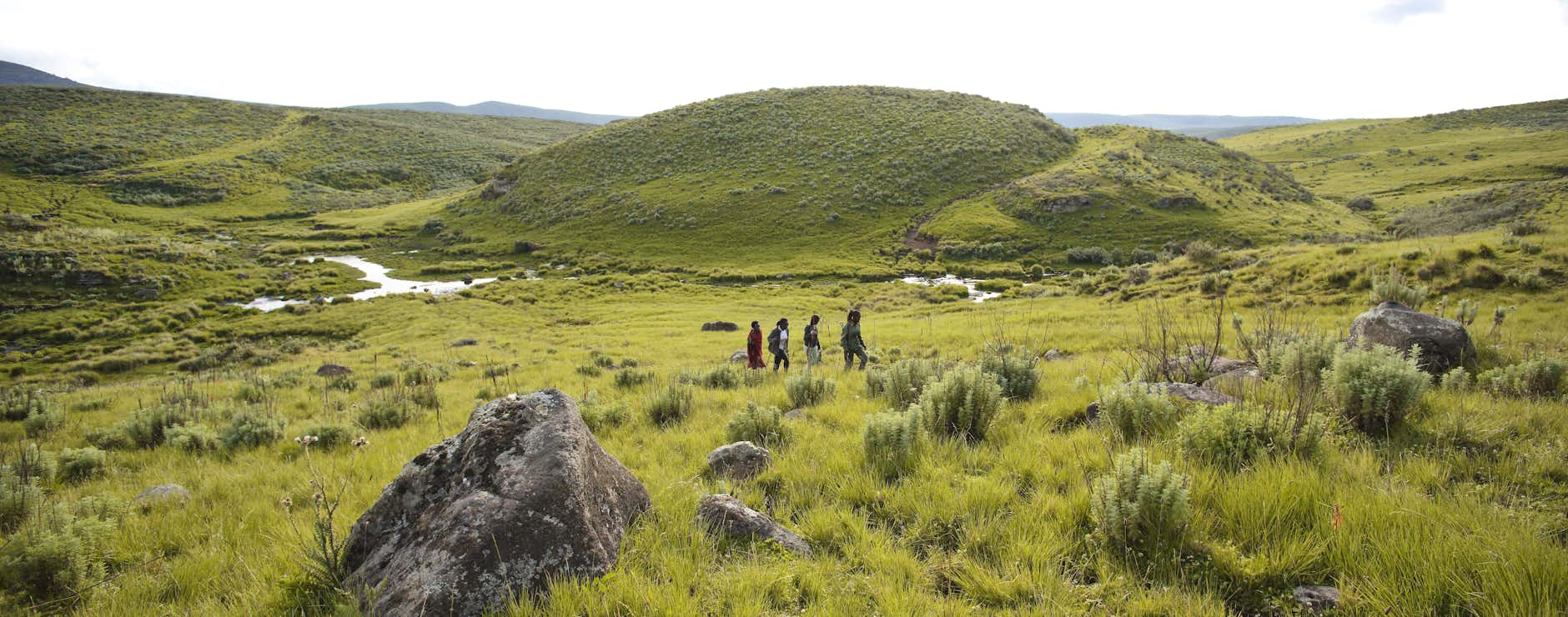The Perfect Picture
When I was last here at the Ngorongoro Crater, it was the lush and green wet season. The wilds spilt in verdant blankets down the walls and into the basin from all directions. Upon returning to it months later to photograph the dry season, it’s almost barren at first glance, but I’m still taken aback by its immensity. You’d expect a volcanic crater to be large - but this is something else altogether. Ngorongoro Crater is roughly 20 kilometres wide and over 600 metres deep. It is the largest unbroken and unflooded caldera in the world. If the clouds hung any lower I wouldn’t be able to see from this side of the basin to the other.

The highlands of Ngorongoro rolling out before you
The name ‘Ngorongoro’ is derived from the Maasai word El-Nkoronkoro, meaning ‘gift of life’. In the wet season, the crater is completely decorated in every shade of green - but looking at how crisp the terrain is at this time of year, it's a wonder how anything can survive. But the grass is good to eat for the wildlife, and the soil is salty with nutrients. The animals are fat and happy at Ngorongoro.
I walk in an arc beside the wall of the crater, trying to find the best angle to set up my tripod. Under the light sky of early morning, the floor of the crater looks bleached by the sun, smeared with the mineral lakes reflecting the first rays of the day and mapped out with the ever-moving shadows of clouds overhead. The crater is embroidered with greens here and there, in the distance a thread of wildebeest moves across the basin.
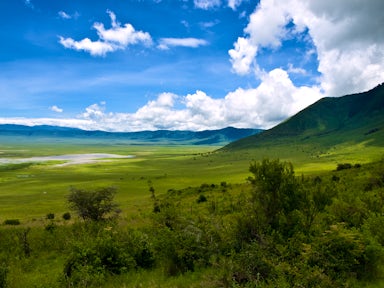
Ngorongoro National Park
The caldera was formed circa three million years ago when a volcano bigger than Mount Kilimanjaro erupted and caved in on itself. What it left behind was a new environment rich with short grass, minerals and fertile volcanic soil that the locals call ‘black cotton’.
It’s still early, and I intend to be finished before the crowds arrive. The crater is Heritage-listed, and home to well over 20,000 animals, including the densest population of lions in the world. It’s one of Tanzania’s biggest safari attractions, and soon the landscape I have nearly all to myself will be dotted with 4x4s.
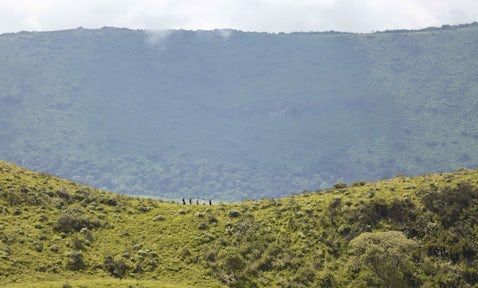
I work to set up quickly. The breeze is slight and I’m careful to make sure everything is secure so nothing topples over. I’ve found my angle: the curve of the crater is clear on the horizon, a small silver lake off to the left, the foreground open to capture any animals that cross my lens. The caldera floor is awash in an orange-purple light I have found to be unique to the East African sunrise, and I feel as though I have found the perfect frame.
Some time has passed and I have yet to take a photograph. Already, the landscape has changed so much. The clouds of dawn have given way to a bright light that hits the lake in my frame at new angles, and I adjust slightly to accommodate the change. Now I can see the way the different environments bleed into each other. Gravelly plains quickly become grassy savannas that move hypnotically in the breeze, patchy forests on the outskirts give way to ashy marshlands.

Eventually, I spy movement. What I had at first thought to be a domed rock erupting from the water begins to create soft ripples that dance across the lake before disappearing. Slowly, a hippo drifts from one side to the other, I lower my head and photograph it as best I can.
Over time, I collect the images I want: a hyena dragging the spine of an unidentifiable animal into the frame, wildebeest bending to take a drink as the hippo looks on, a small herd of zebra snaking into view and dropping to the ground for a dust bath.

Many of these animals will never leave the crater, they are deterred by the deep walls and happily satiated by the ample food supply. However, other animals drop by to visit. I was beginning to think about packing up, aware that the first of the safaris will begin soon, when an African elephant emerges from the forest ahead to my right. Quickly, I move to find the best way to capture it.
Helpfully, it stands just where the forest breaks into the plain, and is dark compared to its pallid backdrop - an easy contrast to photograph. He sways his trunk slightly, flapping his ears. I notice through the viewfinder that his left tusk is worn down, no doubt after a lifetime of felling trees.
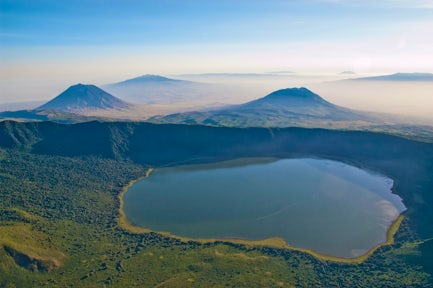
Before long, the first 4x4 slowly drives into view, and I know it’s time to think about leaving the Ngorongoro Crater for the day. I take a moment to step out from behind my camera for the first time in what feels like hours. Taking in the panoramic view, I realise just how much it has changed since I was here last, and I wonder how much it will have changed when I next come back. I have quickly learnt that the environment here is in constant flux, that there is always something new to see with each visit in the Ngorongoro Crater.
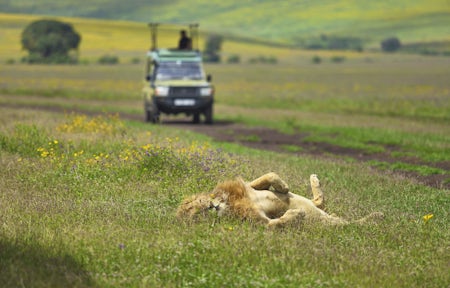
Ready to plan your African adventure?
Listen
We'll spend some time listening to your aspirations, then discuss the kind of experience that might suit you.
Match
Next we'll discuss the options, shortlist the best trips for you and present you our impartial recommendations.
Reserve
We'll place a 24 hour hold on your preferred option - without obligation - whilst we talk through the details.
Whatever your budget, group size, length of stay, preferred activity or appetite for adventure, we can help.

